WWII 1944 SECRET 15th Air Force 17th Bombardment Group Italian Campaign Sardinia B-26 Airfield Map
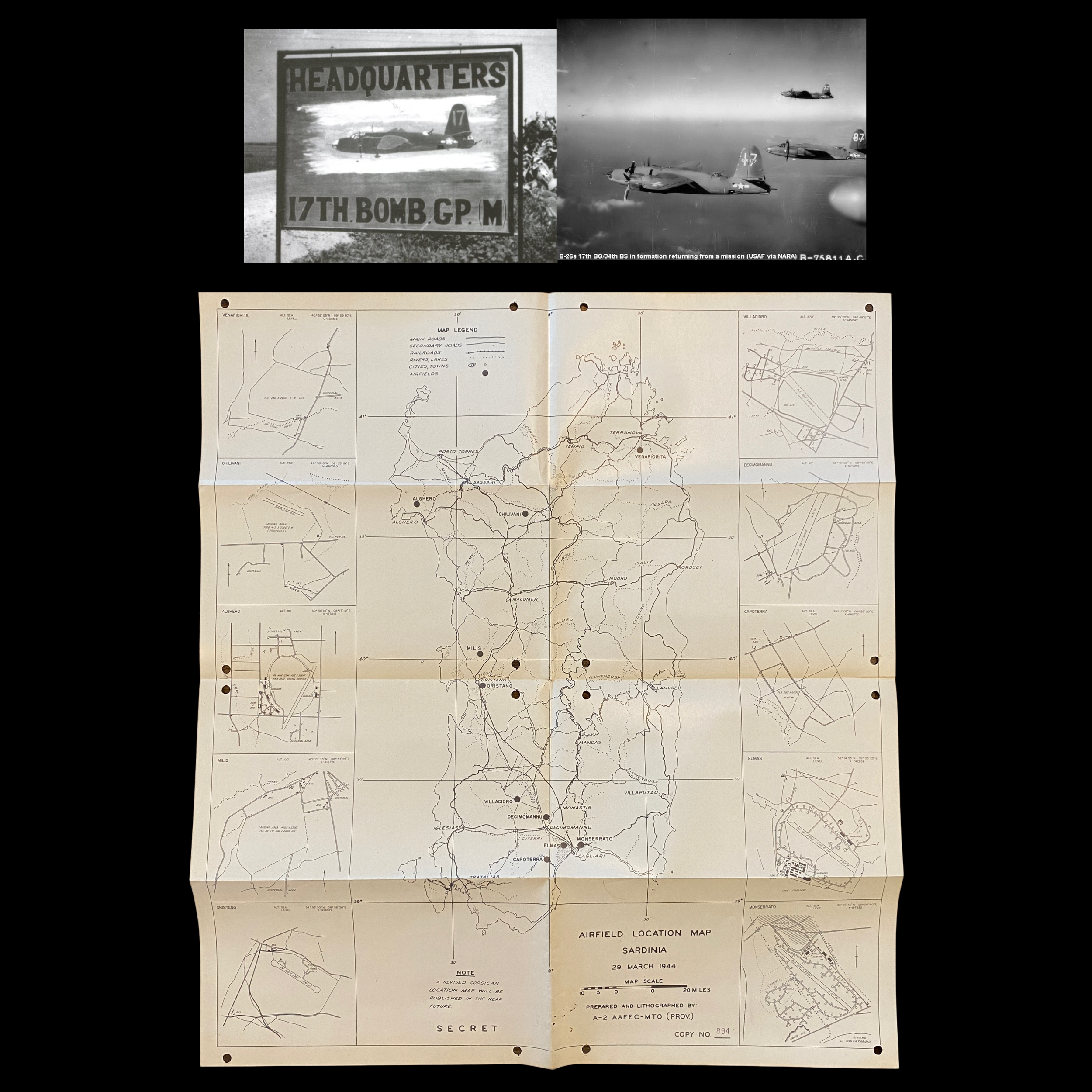


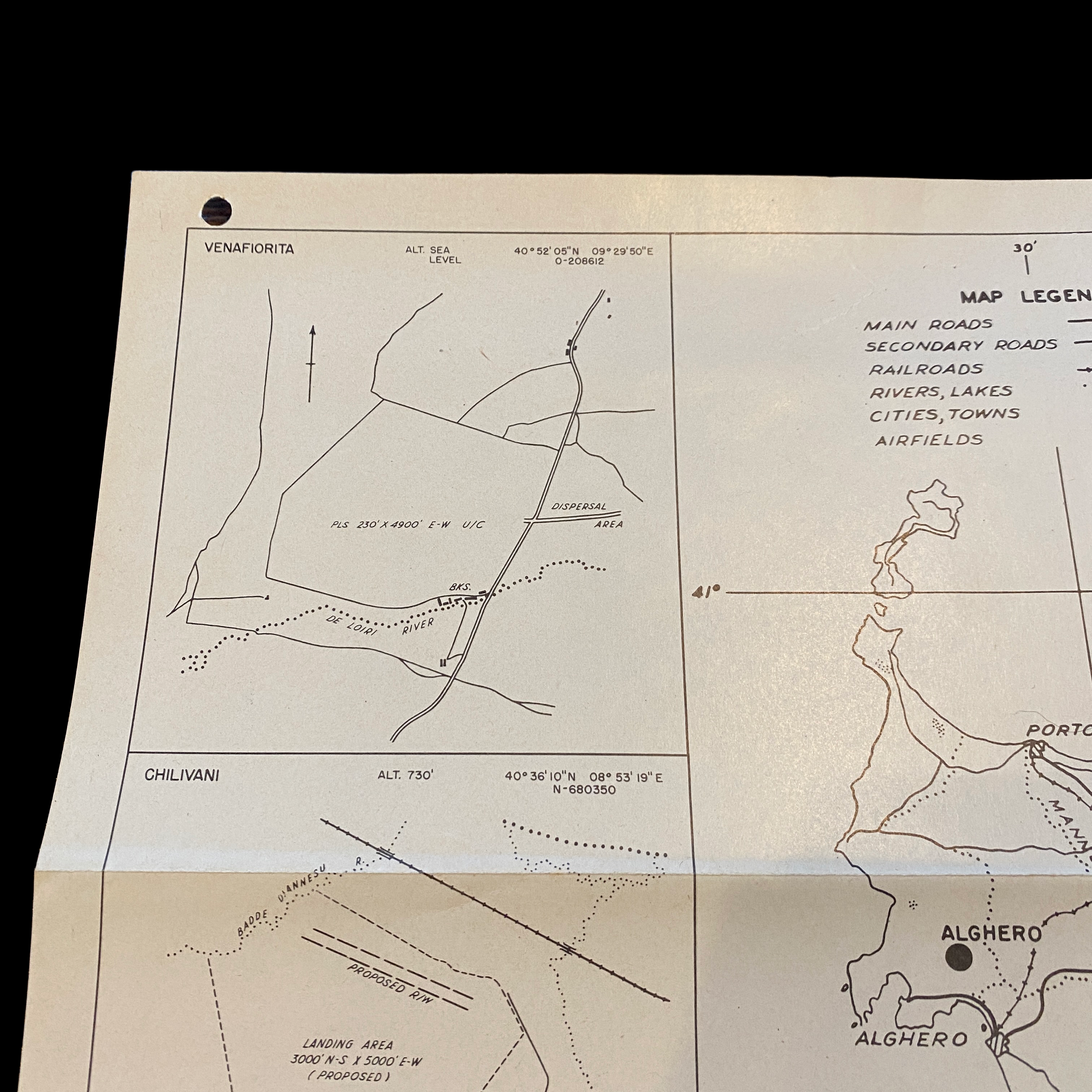
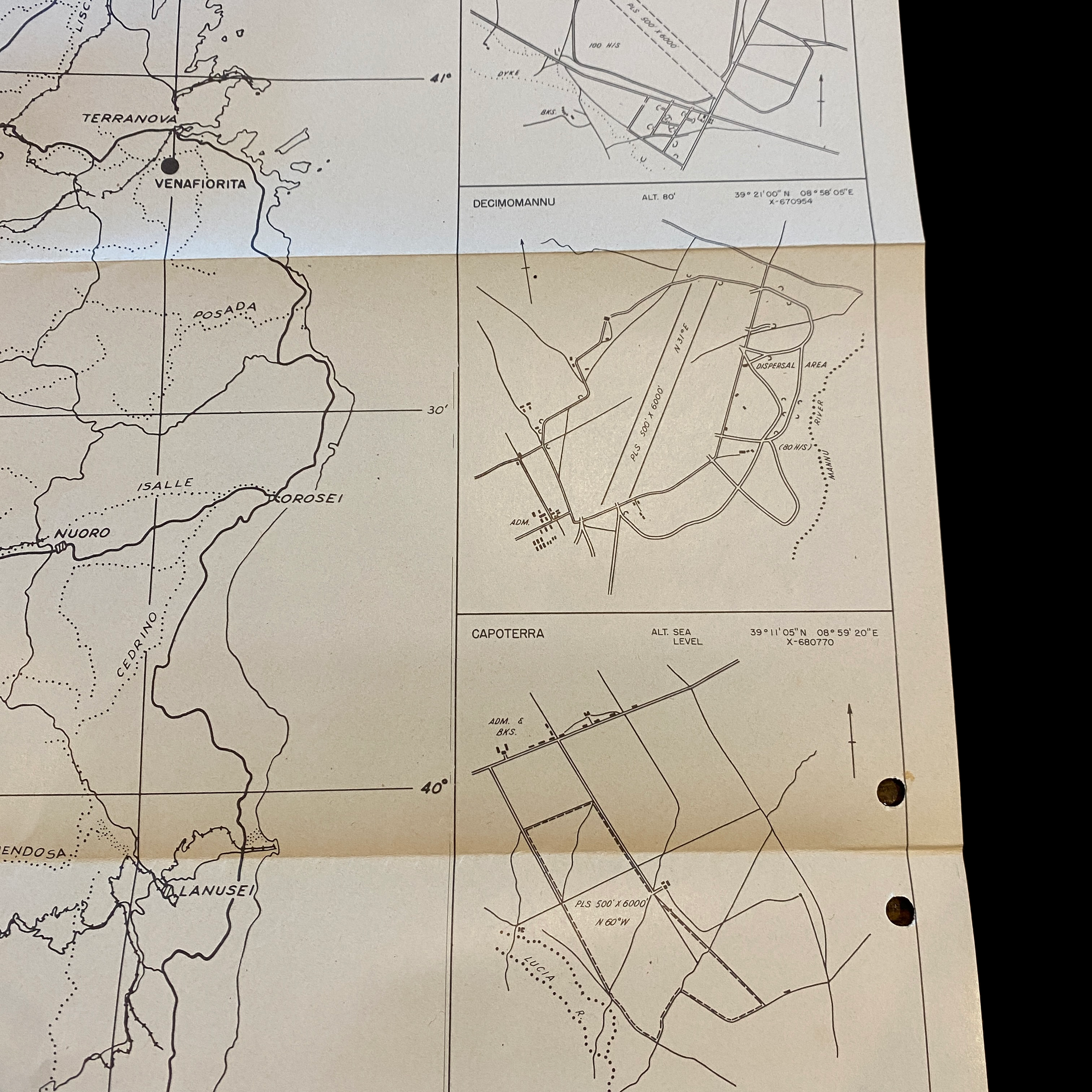


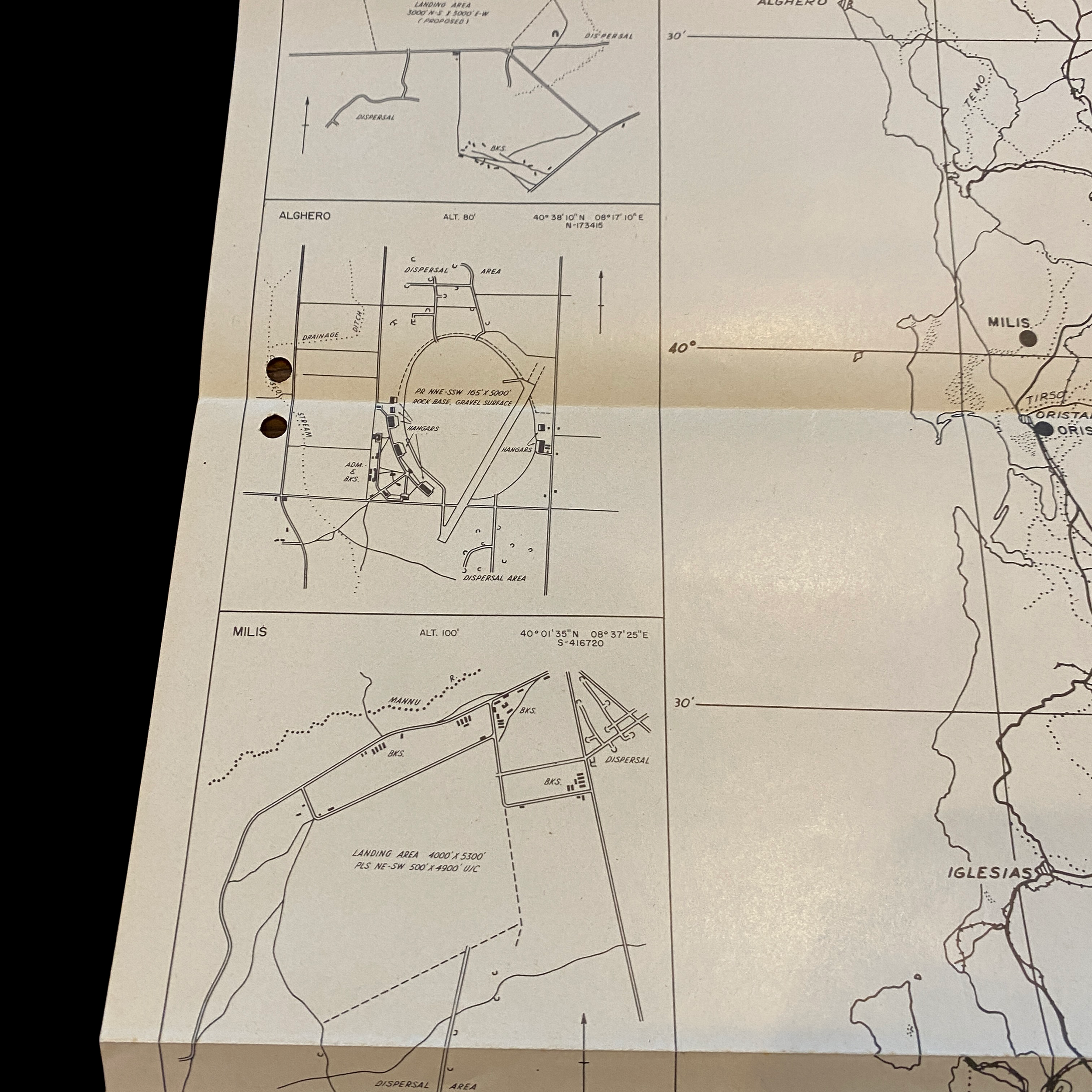



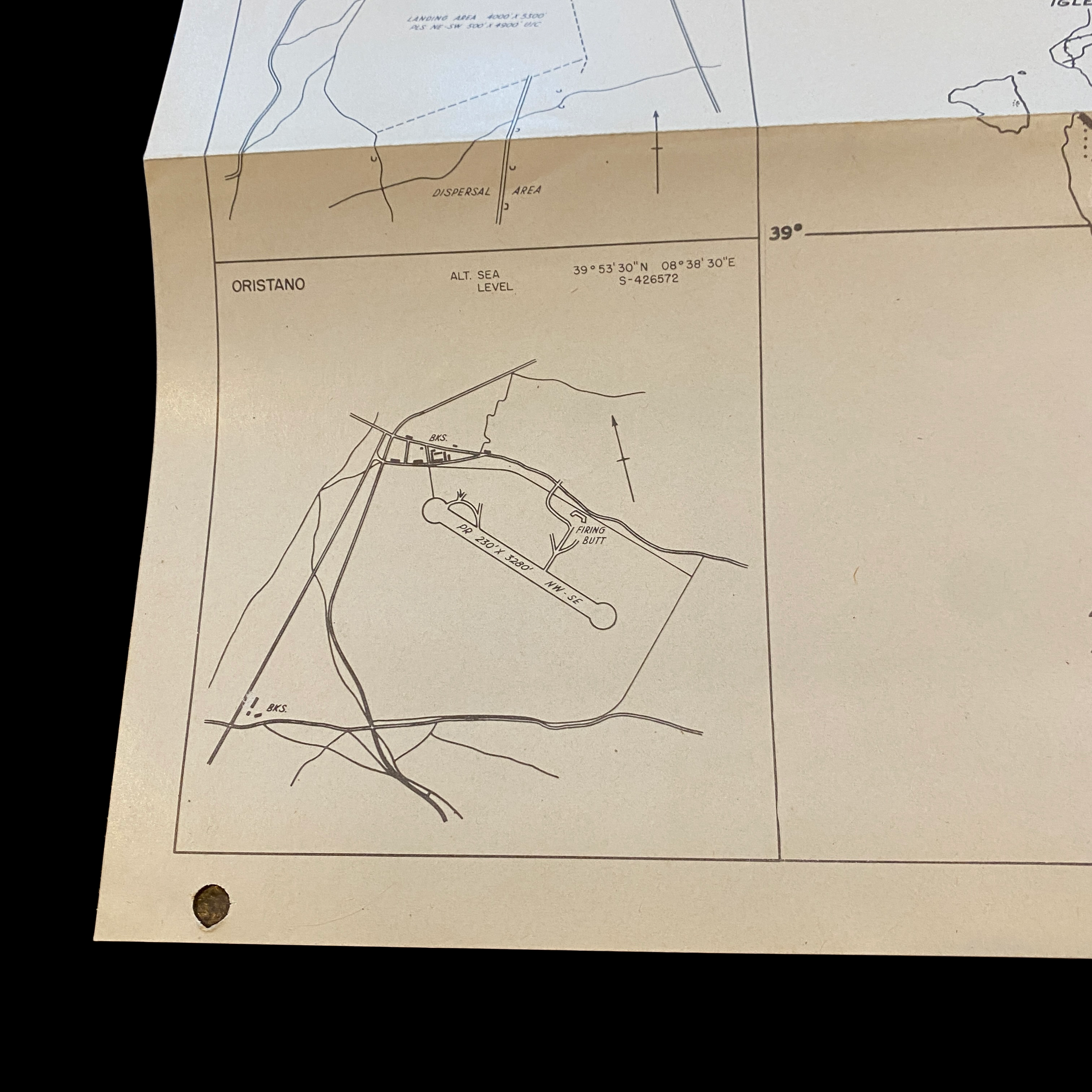















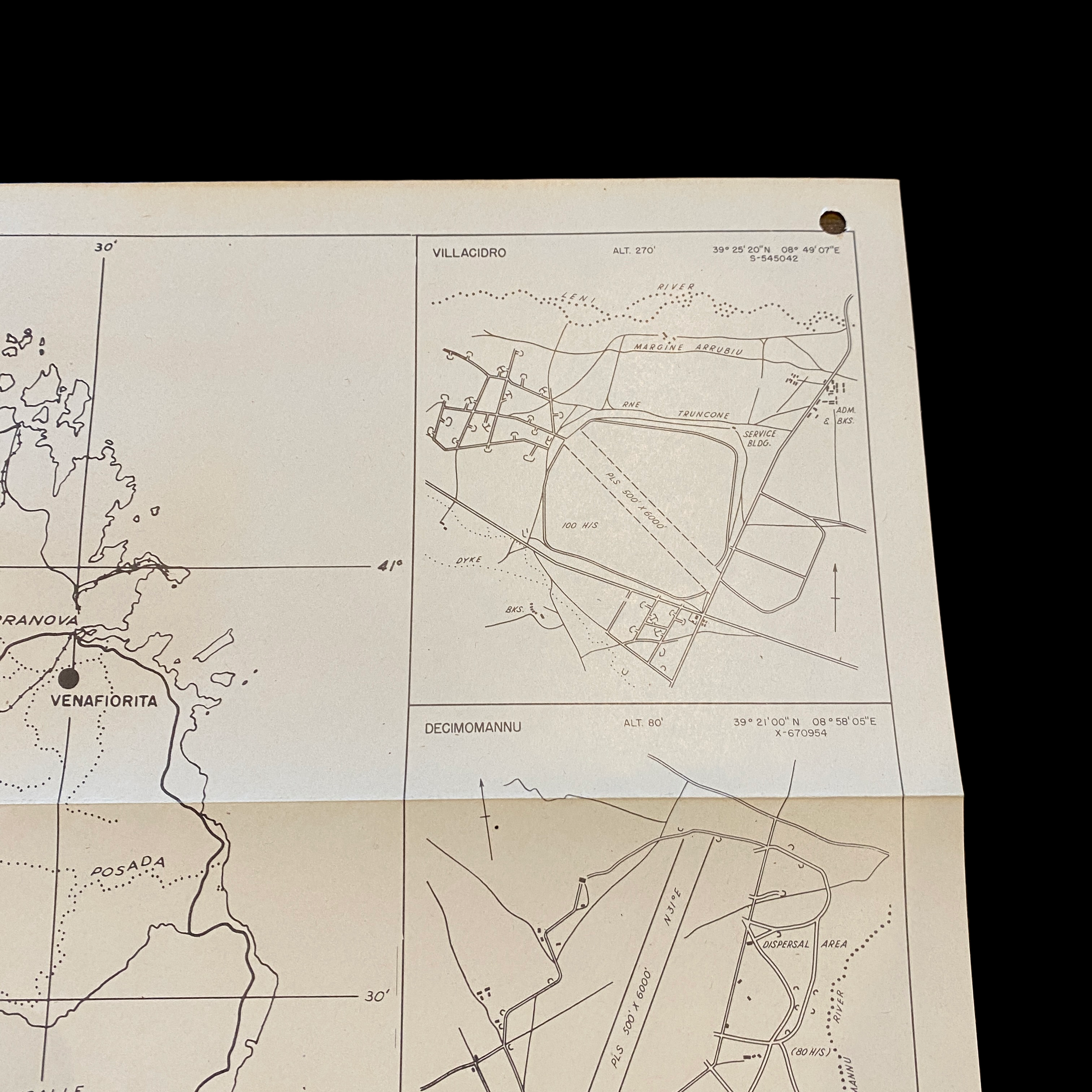

WWII 1944 SECRET 15th Air Force 17th Bombardment Group Italian Campaign Sardinia B-26 Airfield Map
Comes with C.O.A.
This incredible on museum grade World War II map is titled “Airfield Location Map - Sardinia”. Dated March 29th, 1944 this AAF (Army Air Force) map has a very rare SECRET marking. Sardinia was home to the 15th Air Force’s 17th Bombardment Group. Upon the expulsion of Axis forces from North Africa in May 1943, the 17th transferred to Sedrata Airfield, Algeria, to begin air operations against Pantelleria. Five by eight miles in dimension, the Mediterranean island sheltered an important Axis airfield with hangars carved into solid rock. Its sheer cliffs would have proved a daunting obstacle to amphibious invasion but precision bombardment by the 17th secured the surrender of the island's defenders in less than a month. As part of the Fifteenth Air Force, the group followed the Allied forces from North Africa from bases in Tunisia, Sardinia, Corsica, and France, the 17th conducted bombing missions against critical targets throughout the Mediterranean, Italy, southern France and Germany. It later returned to Twelfth Air Force in January 1944. It received a Distinguished Unit Citation for its support of the Anzio invasion and another for its outstanding performance over Schweinfurt. For operations in support of the invasion of southern France, it received the French Croix de Guerre with Palm. All told, the group conducted 624 missions and participated in 11 campaigns during the war, finally returning to the United States and inactivating in November 1945.
This very rare and original map shows all of the airfields on the island of Sardinia. Sardinia, the second-largest island in the Mediterranean Sea, played a crucial role for the Allies during World War II in 1944 and 1945. The island's strategic location made it an ideal location for the Allies to establish airbases and naval bases to support the Italian Campaign and secure the western Mediterranean.
In September 1943, the Allies launched an invasion of Italy and quickly established a bridgehead on the mainland. However, the harsh terrain and resistance from German forces made progress slow and difficult. The Allies realized that to break the stalemate, they needed to gain control of Sardinia and establish air and naval bases to support their operations on the mainland. In November 1943, the Allies launched an invasion of Sardinia and quickly secured the island.
Sardinia became a critical base for the Allies in the Mediterranean. The island's airbases were used to launch bombing raids on enemy positions on the mainland and to provide air cover for Allied shipping lanes. The naval bases on the island were used to support the Allied naval operations in the Mediterranean, including the landing at Anzio in January 1944. The Allies also used the island as a staging area for their invasion of Corsica in September 1943 and their later landing in southern France in August 1944.
The island was also used as a staging area for the air and naval forces that supported the liberation of Italy. The Allies established a large number of airbases on the island, including Elmas, Alghero, and Decimomannu, which were used to support the bombing campaign against German and Italian military targets on the mainland. The naval bases on the island were used to support the naval operations that escorted supply convoys and supported the landing forces on the mainland.
In addition to its military value, Sardinia also played an important role in supporting the war effort in other ways. The island was used as a base for the U.S. Army Service Forces, which supplied the troops with food, fuel, and ammunition. The island was also used as a staging area for the transportation of wounded soldiers to hospitals in North Africa and Europe.
In conclusion, Sardinia played a crucial role for the Allies during World War II in 1944 and 1945. Its strategic location made it an ideal location for the Allies to establish airbases and naval bases to support their operations in the Mediterranean. The island's airbases and naval bases played a critical role in the Italian Campaign, the liberation of Italy, and the invasion of southern France. The island also played a crucial role in supporting the war effort in other ways, such as supplying troops with food, fuel, and ammunition and transporting wounded soldiers to hospitals. Sardinia's importance in the war effort demonstrates the strategic value of the island and its role in the Allied victory in the Mediterranean.
In 1940, Italy officially entered the war as a member of the Axis powers. In the following year, the island of Sardinia became a critical military target for the Allies. The island was strategically important because of its location, which provided a convenient base for the Allies to launch air raids on Italy and other parts of the Mediterranean. Additionally, the island was home to important ports, airfields, and communication facilities, which made it an ideal location for military operations.
The Allies quickly recognized the importance of Sardinia, and in 1942, they launched an invasion of the island. The invasion was led by the American and British forces and was supported by the Free French, who were fighting to liberate France from German occupation. The Allies quickly gained control of the island and established their bases there. The Allies were able to use Sardinia as a launching pad for air raids on the Italian mainland and other parts of the Mediterranean.
One of the most significant events that took place on Sardinia during the war was the Battle of Sardinia. The battle took place in 1943 and was fought between the Allies and the Axis powers. The battle was a crucial turning point in the war, as the Allies were able to gain complete control of the island and establish it as a strategic military hub. The battle was fought with great ferocity, and both sides suffered heavy losses. However, the Allies were eventually able to gain the upper hand, and the Axis powers were forced to retreat.
The Allies' control of Sardinia had far-reaching effects. With their control of the island, the Allies were able to launch air raids on the Italian mainland and disrupt the German supply lines. This made it much easier for the Allies to continue their advance into Italy and eventually to liberate the country from the grip of the Axis powers.